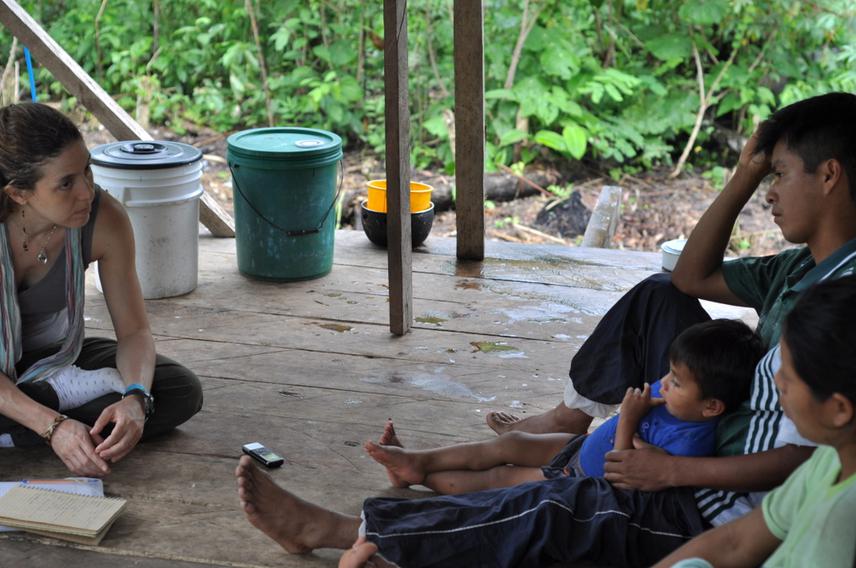Marina Londres
Other projects
28 Mar 2008
Ecology and Management of Andiroba (Carapa guianensis aubl.) in Tidal Floodplain Forests of the Amazon Estuary: Participatory Research of a Community-Identified Priority Timber and Non-Timber Tree Species
25 Aug 2009
Researching Sustainability of Harvests Jointly with Local Stakeholders in Amazonian Flooded Forests: Linking Science with Action
Compare local resource use strategies among Amazonian traditional population groups in three countries, and explore how environmental, economic, and social policies should be designed to optimally support sustainable forest-based livelihoods.
In the face of climate change, forest degradation, biodiversity loss and other environmental challenges, formulating better ways of governing natural resource systems is a fundamental concern of our time. Owning or managing over one quarter of the word’s tropical forests, local communities are often regarded as stewards of forest ecosystems that modern societies depend on to regulate water cycles, sustain biodiversity and secure climate related ecosystem services.

On the other hand, forests do not only play an important role in peoples’ socio-cultural systems; they also help them meet their subsistence needs. Historically, however, forest peoples around the world have been suffering numerous challenges in their efforts to keep their customary rights and management authority over forest lands. Nowadays, forest communities are facing various pressures for change; globalization renders communities increasingly vulnerable; national forest use and access regulations limit livelihood options for both subsistence and commercialization; at the same time, communities often operate at distinctive disadvantage across market mechanisms.
Although community-based forest management can potentially be a sustainable development pathway for traditional communities, considerable knowledge gaps exist regarding how environmental, economic, and social policies should be designed to optimally support traditional forest-based livelihoods. Under historically, culturally, ethnic, environmentally and geographically diverse settings throughout the Amazon, the goal of this project is to compare:
(1) how local livelihood strategies have evolved in different socioeconomic and political contexts;
(2) the varied roles forests play in peoples’ livelihoods;
(3) the influence of markets, land tenure systems, resource use rights, and policy configurations on local wellbeing levels and conservation parameters. As such, the research sites encompass a gradient of Amazonian socioeconomic contexts including:
(1) riverine communities in Pará (Brazil);
(2) agricultural settlers in Amazonas (Brazil);
(3) forest extractives and agricultural settlers in Acre (Brazil);
(4) forest extractives in Pando (Bolivia);
(5) indigenous peoples in Sumaco (Ecuador), which altogether covers 84 communities and three countries.
The project will be built on standardized and in-depth records of local resource use strategies among traditional population groups (from the Poverty and Environment Network / Center for International Forestry Research -CIFOR), and on additional fieldwork for gathering further quantitative and qualitative information on contextual and livelihood factors, and conduct participatory workshops among community residents to discuss research outcomes in the context of alternative policies. Implications are derived in order to support the design policies aimed at enhancing sustainable development opportunities for traditional populations in the Amazon region.